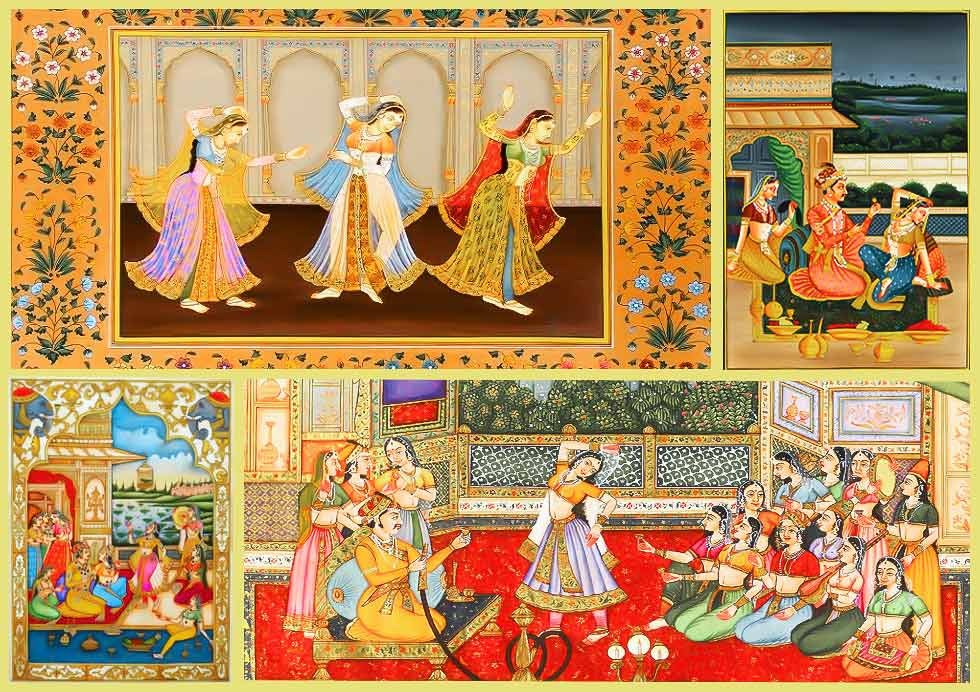SIGN UP FOR NEWSLETTER
Be the First to Know. Sign up to newsletter today

Miniature paintings are handmade paintings of very small size. They are widely loved for capturing intricate details by the use of delicate brushwork.( They used squirrel hair for the brushes). The beautiful depiction of royal courts, kings & queens & their colourful costumes are captivating .
Available at Delhi:- Rajasthali, Poonam Backiliwal, Bharti Delhi(Emporioum), Kamala, State Emporioums, CP
Available at Mumbai:- Amber
Shop in Jaipur at:- Rajasthali
In addition, materials such as paper, palm leaves, wood, marble and cloth are used to accomplish this ancient work of art. These paintings are generally not made on a very large size. They are usually done on 6″ by 4 ” paper although larges pieces are also available.
Natural sources such as vegetables, gold, indigo, silver as well as precious stones are used to make colours for these paintings.
In the 7th century AD, this art form flourished under the guardianship of the Palas of Bengal. Several Buddhist scriptures used these paintings to depict miniature images.Resonant with Ajanta murals, Pala art was made distinctive by the use of subdued colours. Similar to Budhism, Jainism inspired similar paintings in the western region of Gujarat & Rajasthan.Jain manuscripts used miniature painting in bright colours such as red & blue.Subsequently, the Persian & Mughal influences replaced the paper with palm leaf and several new colours & dimensions were introduced in the painting.
Rajput miniature evolved in the 18th Century as a distinct art form. Bundi, Kishangarh (near Ajmer), Mewar & Marwar in Rajasthan were important schools for miniature painting. The walls of forts & palaces were decorated with these paintings . The subject was from Ramayan,Mahabarata, stories of Lord Krishna or about valour & victory of the Rajput rulers. Further, the pahari style of painting also sprung up in the hill (Pahari)regions of Himachal Pradesh.
For instance, around 960 A.D. in India, miniature paintings focused on religious themes. Later, the rise of Mughal Empire brought the element of Persian style into miniature paintings. Further progress came with the impact of European paintings in Mughal court. Finally, miniature paintings found patrons in the Rajput rulers of Rajasthan in the 17th-18th century. As a matter of fact, they encouraged the royal court scenes and battle scenes.
Be the First to Know. Sign up to newsletter today
171 views